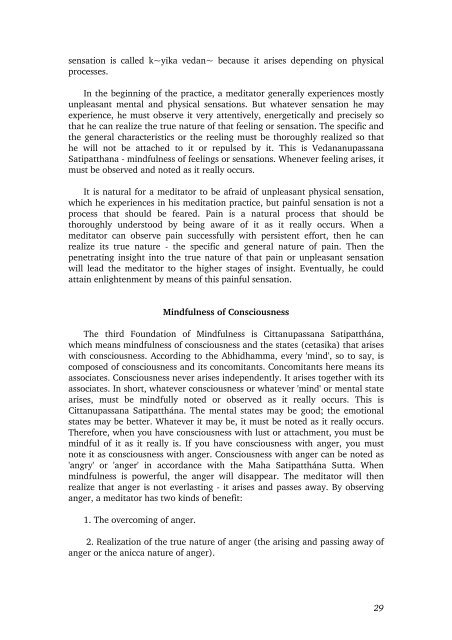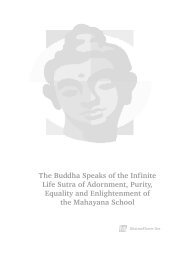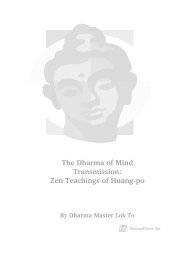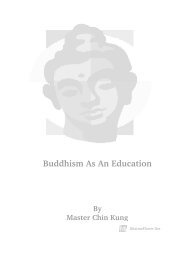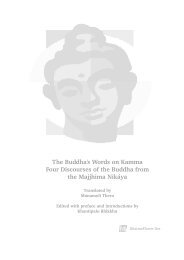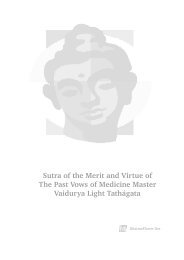Vipassana Meditation : Lectures On Insight Meditation by Venerable
Vipassana Meditation : Lectures On Insight Meditation by Venerable
Vipassana Meditation : Lectures On Insight Meditation by Venerable
Create successful ePaper yourself
Turn your PDF publications into a flip-book with our unique Google optimized e-Paper software.
sensation is called k~yika vedan~ because it arises depending on physicalprocesses.In the beginning of the practice, a meditator generally experiences mostlyunpleasant mental and physical sensations. But whatever sensation he mayexperience, he must observe it very attentively, energetically and precisely sothat he can realize the true nature of that feeling or sensation. The specific andthe general characteristics or the reeling must be thoroughly realized so thathe will not be attached to it or repulsed <strong>by</strong> it. This is VedananupassanaSatipatthana - mindfulness of feelings or sensations. Whenever feeling arises, itmust be observed and noted as it really occurs.It is natural for a meditator to be afraid of unpleasant physical sensation,which he experiences in his meditation practice, but painful sensation is not aprocess that should be feared. Pain is a natural process that should bethoroughly understood <strong>by</strong> being aware of it as it really occurs. When ameditator can observe pain successfully with persistent effort, then he canrealize its true nature - the specific and general nature of pain. Then thepenetrating insight into the true nature of that pain or unpleasant sensationwill lead the meditator to the higher stages of insight. Eventually, he couldattain enlightenment <strong>by</strong> means of this painful sensation.Mindfulness of ConsciousnessThe third Foundation of Mindfulness is Cittanupassana Satipatthána,which means mindfulness of consciousness and the states (cetasika) that ariseswith consciousness. According to the Abhidhamma, every 'mind', so to say, iscomposed of consciousness and its concomitants. Concomitants here means itsassociates. Consciousness never arises independently. It arises together with itsassociates. In short, whatever consciousness or whatever 'mind' or mental statearises, must be mindfully noted or observed as it really occurs. This isCittanupassana Satipatthána. The mental states may be good; the emotionalstates may be better. Whatever it may be, it must be noted as it really occurs.Therefore, when you have consciousness with lust or attachment, you must bemindful of it as it really is. If you have consciousness with anger, you mustnote it as consciousness with anger. Consciousness with anger can be noted as'angry' or 'anger' in accordance with the Maha Satipatthána Sutta. Whenmindfulness is powerful, the anger will disappear. The meditator will thenrealize that anger is not everlasting - it arises and passes away. By observinganger, a meditator has two kinds of benefit:1. The overcoming of anger.2. Realization of the true nature of anger (the arising and passing away ofanger or the anicca nature of anger).29


